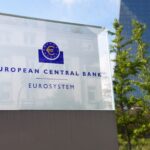
Inflation in the Netherlands amounted to 3.1 percent in October. This is evident from the rapid estimate by the Central Bureau of Statistics (CBS). This makes the figure slightly lower than in September, when inflation was 3.3 percent. According to Statistics Netherlands, the decline is mainly due to lower energy prices, although services and food remain more expensive.
Energy pushes inflation rate down
The main reason for the decline is the decreased price of energy. Petrol and diesel became slightly cheaper and the rates for electricity and gas also fell slightly. According to Peter Hein van Mulligen, chief economist at Statistics Netherlands, energy is once again a determining factor in inflation developments. “We are also seeing a decrease in electricity and gas,” he says.
Energy and fuel prices rose by 2.1 percent in October, compared to an increase of 4 percent a month earlier. This has slowed down the pace of price increases considerably.
Nevertheless, Van Mulligen warns that the energy market remains volatile. New sanctions on Russian oil or adjustments in production by OPEC countries could quickly have an effect at the pump. According to economists, higher oil production will ultimately put downward pressure on prices.
Services inflation remains a concern
Although overall inflation is falling, prices of services are again rising faster. They rose by 4.5 percent in October, compared to 4.1 percent in September. That is the highest level in six months. According to economists, this is cause for concern, because prices in the services sector often fall less quickly than for energy or goods.
Food, drinks and tobacco became 3.8 percent more expensive, slightly more than the previous month. Industrial goods rose only 0.4 percent in price, compared to 1.5 percent in September. This seems to allow producers to moderate price pressure somewhat.
The Netherlands remains above the European average
Inflation is still slightly above the European Central Bank’s (ECB) target of 3 percent. According to the European Harmonized Measurement Method (HICP), inflation in the Netherlands was 3.0 percent, the same as a month earlier.
This means that the Netherlands is still at the top of the European middle bracket. The ECB aims for inflation of around 2 percent, but does not expect full price stability to return until 2026.
What this means for the economy and your wallet
For consumers it is a mixed picture. Energy prices provide temporary relief, but the higher costs for services continue to be felt in the wallet. Rent, insurance and eating out in particular have become considerably more expensive.
The slight drop in inflation is positive news for the European Central Bank, which already indicated in September that it was not considering any new interest rate increases for the time being. More stable inflation could even lead to a slight reduction in interest rates in 2026, which would be beneficial for loans, mortgages and investments.
The crypto market also reacts sensitively to inflation trends. Falling inflation and stable interest rates could have a positive effect on risky assets such as Bitcoin in the long term, as investors are once again more willing to take risks.
Source: https://newsbit.nl/inflatie-in-nederland-daalt-licht-naar-31-procent-lagere-energieprijzen-drukken-cijfers/

